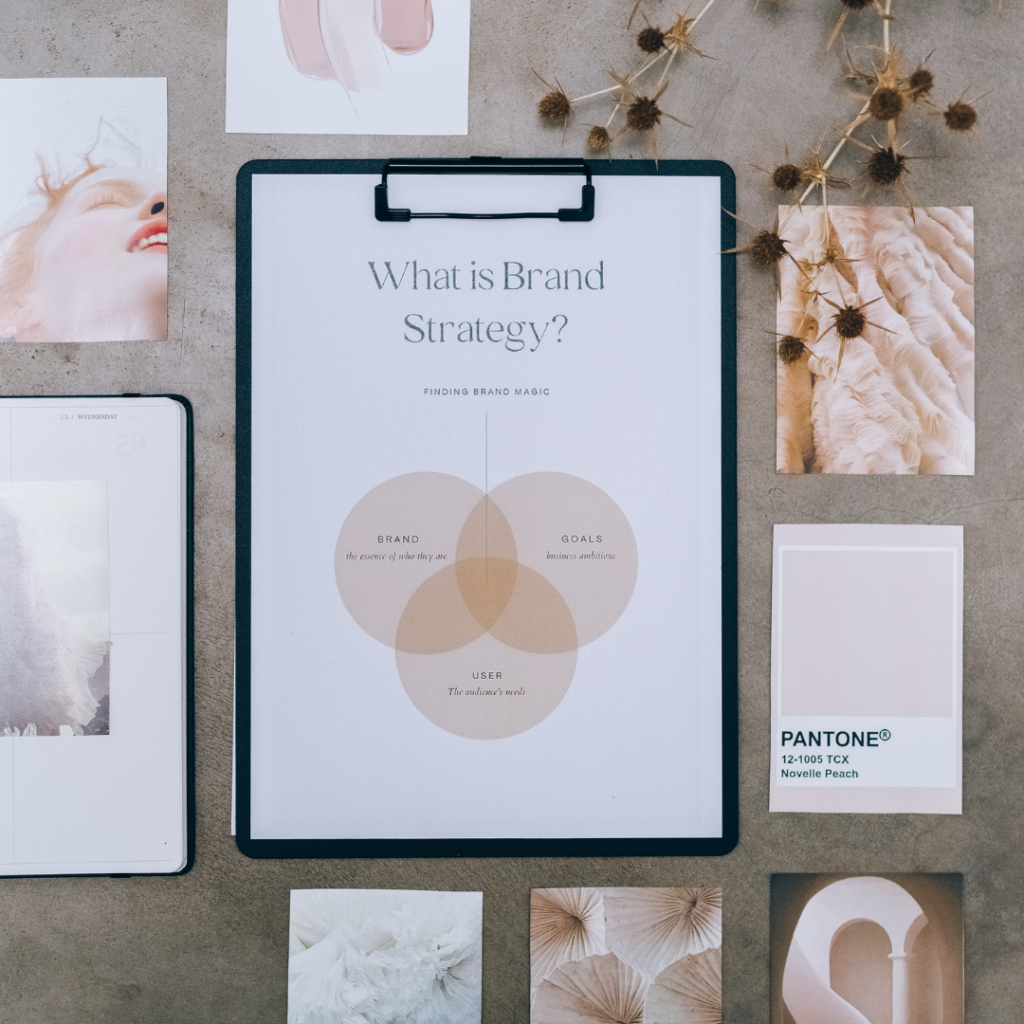
Before working with a coach, I think it’s helpful to know what their client success journey looks like. This helps you decide whether their roadmap is one that will benefit you and maximize the results you’re looking for in your business.
Introduction to My Client Success Journey
My client success journey consists of 5 phases. Over the past few months, I have found this to be the best way to get results for your business. These 5 phases help solidify your unique proposition, your competitive advantage, your differentiating factors. They also build on each other, culminating in a business that has a solid foundation. We cover every element of your business, from the vision to the customer acquisition strategies. We talk about your business model, your brand strategy, your positioning, your business strategy and we create a roadmap of action items to guide you to your goals.
You’ll notice I use a lot of strategy in my client journey. I whole-heartedly believe that any person in business should spend some time figuring out what is going to work best for them and their business before jumping in. That doesn’t mean I don’t believe in taking imperfect action, because I absolutely do. In fact, I’ve pivoted my own business several times. But it’s important to have a plan, to be positioned a certain way, to develop strategies across brand, business and customer experience that work together to reinforce your brand and your business.
Phases within my Client Success Journey
My clients have found my easy-to-follow, step-by-step and practical approach immensely helpful in uncovering opportunities to leverage and identifying areas to improve within their businesses. And so I’d like to share my Client Success Journey with you today.
My Client Success Journey
- Vision, Mindset
- Business Model
- Brand Strategy
- Business Strategy & Roadmap
- Customer Strategy
Phase 1: Vision and Mindset
When we start working together, I encourage you to spend some time understanding your future vision that you have for yourself. It’s important for your to have an idea of where you want to go and be really clear on what that looks like. The more clear your vision is, the easier it’s going to be for you to get there. Your future vision can be broken down into a long-term (e.g. 10 year) vision and a short-term (e.g. 1 year) vision. That’s what I find works well for my clients, as well as for myself.
Your vision and your mindset are closely related. When you can picture your vision, and you spend some time every day, whether by working with me, or working on the activities and exercise we would have talked about, you reinforce your direction towards that goal.
There is some magic that happens when you have someone in your corner, reminding you every day that you have this vision that you are going to accomplish, and that you absolutely can accomplish. Whether you believe in mindset or not, and whether you work on your mindset regularly, having someone motivating you along your journey is a game-changer. Often, I find that when people work alone, without a business coach or a business partner, they lose sight of their vision. Their days become filled with their day-to-day tasks, and they lose the momentum and the ability to take leaps and bounds towards their ultimate goal. It is so easy to get bogged down in your daily tasks, and to forget about your ultimate destination. The unfortunate thing about this happening is that it becomes increasingly difficult to get to your destination when your mindset isn’t in the right place.
Phase 2: Business Model
Once we have the vision and the mindset in place (the mindset work is continuous, and carries on throughout our engagement), we focus on developing your most aligned business model. When it comes to business models, the possibilities are infinite. At this point, it is most important to design your business in a way that suits you, your vision, your dream lifestyle, your strengths and your skills.
We use this time to hone in on the ideal customer for your business, and we develop an irresistible product or service offer that really and truly solves their problem or gives them the desired outcome they are looking for. We also take the time here to make sure the delivery mechanism is optimized for your strengths and delivers a great experience to their clients. And lastly we make sure to explore different profit models and choose the one that aligns to your vision.
Phase 3: Brand Strategy
Once we have the vision, mindset and business model in place, we can begin working on the brand strategy. In this phase, we start putting together the positioning, and the ultimate look and feel of your business. This is an in-depth exercise involving plenty of research on your ideal customer and your competitive landscape.
At this point we also dive deep into the offer you have in place for your clients, and we optimize it for outcome, effectiveness and positioning. This ensures that you have something in place that will attract your most ideal customers and give them the results they are looking for (and more!).
And lastly, we ensure that all customer-facing platforms such as social media platforms and your website are in line with the brand strategy, both in terms of look and feel we well as content.
Phase 4: Business Strategy
By the time we get to the business strategy phase, you will have so much clarity on your business, covering your business model, your profit model, your brand strategy and positioning, your irresistible offer, and the value you provide your clients.
At this stage, we put the final touches on positioning. We make sure we are clear on the unique and desirable position that you and your business will occupy. If there is anything that needs re-positioning, this is when we identify and make those tweaks.
An extremely helpful part of this phase is getting your roadmap together. This roadmap is broken down into your strategic pillars and outlines all the actions that need to be completed to get you from where you are today to that future vision we had outlined earlier in our engagement. You will find this activity to be extremely useful as it alleviates the stress, anxiety and overwhelm that comes with running your own business. The actions within the roadmap are prioritized so that at any given point, you know exactly what you should be working on, and can focus on that instead of your entire to-do list.
Phase 5: Customer Strategy
In this final phase, we explore all the different ways you can delight your customers. In business, there is nothing more important than keeping your customers coming back for more. And the best way to do that is to ensure you have an incredible customer strategy.
This strategy covers acquisition, in-service, post-service and every existing or potential touch-point that your client does have or could have with your business. I believe that the majority of businesses do not spend enough time on their customer strategy. This is a huge missed opportunity, because your customer experience can make or break your relationship with your customers and your potential customers.
Expected Outcome
Once we go through all 5 phases, and even as we work through them in our time together, the clarity, focus and direction you build up starts creating ripple effect in your business. Your messaging becomes more clear. Your content becomes more consistent. You start understanding who you are serving and why you are uniquely positioned to offer them what they want, need and more.
Your business starts taking a more defined and clear position, which makes it more magnetic to your ideal customers. You will find opportunities to leverage that will help you get to your ultimate goal. And you will find it easier and easier and a lot more exciting to work towards that goal.
And more than that, having someone in your corner, guiding you through your strategic decisions and cheering you on, is absolutely priceless.
I hope this client journey inspires you. If you know someone who would benefit from this, please share!








